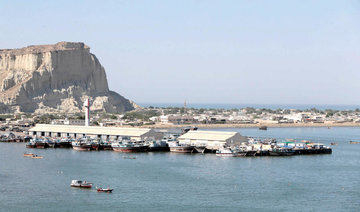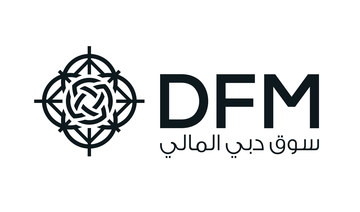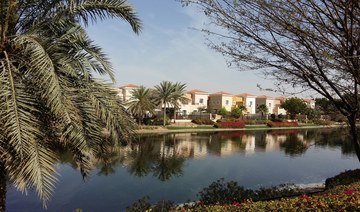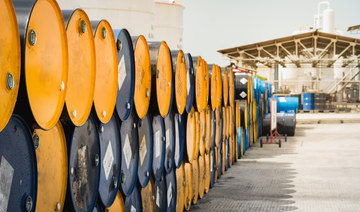GWADAR, Pakistan: Remote and impoverished, Pakistan’s Gwadar port at first glance seems an unlikely crown jewel in a multi-billion-dollar development project with China aimed at constructing a 21st century Silk Road.
Situated on a barren peninsula in the Arabian Sea, Gwadar, or the “gate of the wind,” owes its fortuitous selection as Pakistan’s next economic hub to its strategic location near the Strait of Hormuz.
The city is set to become the bridgehead for the China-Pakistan Economic Corridor (CPEC), a $54 billion (SR202.50 billion) project launched in 2013 linking western China to the Indian Ocean via Pakistan.
The corridor is one of the largest projects in Beijing’s “One Belt One Road” initiative, comprising a network of roads and sea routes involving 65 countries.
The Chinese-financed initiative aims to connect the country with Africa, Asia and Europe through a vast network of ports, railways, roads and industrial parks.
But for Pakistan, participating in the project presents an enormous challenge in a country plagued by weak institutions, endemic corruption and a range of insurgencies in areas slated to host the corridor.
“This port is going to help Pakistan make linkages with neighboring countries. The entire nation will be getting benefits out of Gwadar,” Dostain Khan Jamaldini, chairman of the Gwadar Port Authority, told reporters.
But “the first beneficiaries of this port will be the people of Gwadar.”
The subject of economic dividends is extremely sensitive in resource-rich Balochistan — one of Pakistan’s poorest and most violent provinces, where separatist insurgencies have been waged for decades.
Since the beginning of the project militants have repeatedly attacked construction sites and targeted Chinese workers.
The project includes the country’s first deep-water port, a free-trade zone and 50 kilometers of dock space.
“Gwadar port is not Chinese, our strong partner is Chinese and we appreciate their boldness,” said Jamaldini.
“They came to Gwadar when nobody was accepting the idea to come and visit.”
China has eyed Gwadar for years.
Beijing financed an earlier scheme to develop the port prior to 2007, which was later overseen by a Singaporean group. But following bouts of insecurity, the Singaporeans handed it back to the Chinese in 2013.
The ambitious corridor is also far from popular in the region. India makes no mystery of its reservations over an infrastructure project that crosses through disputed Kashmiri territory.
This month US Defense Secretary Jim Mattis raised concerns about the issue, sparking a fierce backlash in Pakistan and claims Washington was trying to “contain China” in favor of arch-rival India.
Beyond diplomatic concerns, security remains a key issue in Gwadar, according to Brig. Kamal Azfar, who heads “Brigade 440” — a security outfit created to protect CPEC projects and personnel.
Hostile forces are trying to “scuttle or stall CPEC,” he said in reference to accusations India has backed insurgents hostile to the project.
The area also lacks water and electricity, which developers hope will be remedied by dams and desalination plants outlined in the scheme.
Officials also worry the peninsula will fall victim to real estate speculation. Property prices near the port doubled between 2014 and 2016, said Sajjad Baloch, the director of the Gwadar Development Authority, before falling 20 percent.
And despite promises of future prosperity, skilled labor is lacking, says Mohamed Siddique, who runs a local hospital. Even with modern facilities it operates at a limited capacity because of a dearth of specialists.
In Gwadar city, economic activity spurred by CPEC remains limited. A lone freighter was anchored in the port during AFP’s recent visit. Only three to four arrive every month, according to port authorities.
The expressway leading to the site is unfinished.
About 300 Chinese people working on various projects live in prefabricated houses on the port — coined Chinatown — but only venture out with a security escort.
The city itself, with a population of about 100,000 that is projected by one estimate to jump tenfold by 2050, has relied on fishing and the artisanal construction of boats for generations.
Up to 50,000 people, mostly fishermen, could be “gradually” resettled to make way for the project, Baloch said, adding the potential move could see them relocated to a “state-of-the-art jetty.”
The first priority for the jobs will go to Gwadaris, “then to the Balochis, then to the people of any part of Pakistan,” Baloch said.
However few Gwadaris have been hired at the port, according to locals building boats on a nearby beach.
“We are hoping to get a job there,” said Juneid.
For others, it’s a chance to right the wrongs of past subjugation.
“Balochistan province should get the maximum benefits instead of outsiders,” said Abdullah Usman, 47, a social worker.
“It will be unfortunate if the local Baloch do not benefit... that would cause an increase in the several decades long sense of deprivation.”
At a forgotten Pakistan port, China paves a new Silk Road
At a forgotten Pakistan port, China paves a new Silk Road
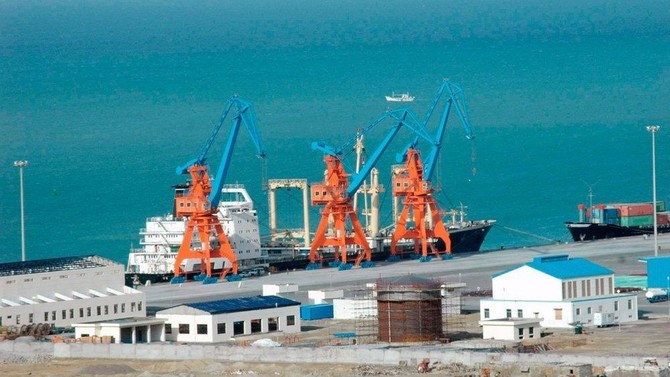
UAE grocery store chain Spinneys to float 25% stake on Dubai Financial Market
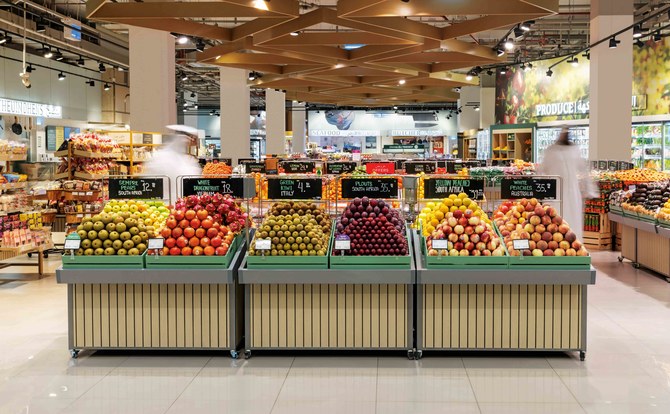
RIYADH: UAE-based grocery store operator Spinneys 1961 Holding PLC has announced its intention to proceed with an initial public offering on the Dubai Financial Market.
Al Seer Group, Spinney’s parent company and the selling shareholder, expects to sell 25 percent of the total issued share capital of the firm, equivalent to a total of 900 million shares.
The IPO’s subscription period will begin on April 23 and the DFM listing is set for May 9, the company said in a release.
The offering will be made available to UAE retail investors with 5 percent or 45 million shares in the first tranche, while the second tranche will provide professional stakeholders with 855 million shares.
Dubai’s high-end property sales rise on overseas demand
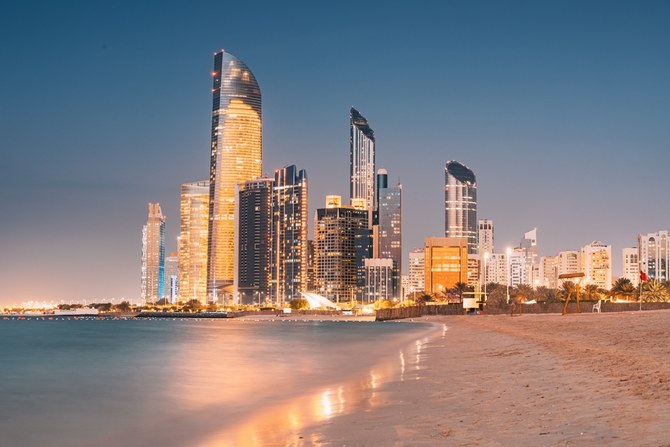
DUBAI: Sales of homes in Dubai worth $10 million or more rose 6 percent in the first quarter versus last year, an industry report showed on Tuesday, as demand from the international ultra-rich for homes in the emirate showed little sign of abating, according to Reuters.
A total of 105 homes worth an overall $1.73 billion were sold from January to March, up from around $1.6 billion a year earlier, according to property consultancy Knight Frank.
Activity was dominated by cash buyers, with palm tree-shaped artificial island Palm Jumeirah the most sought-after area, accounting for 36.3 percent of sales by total value, followed by Jumeirah Bay Island and Dubai Hills Estate.
Home to the world’s tallest tower, the UAE’s Dubai is seeking to grow its economy through tourism, building a local financial center and by attracting foreign capital, including into property.
The recent property boom has shown signs of fizzling out, however, with developers, investors and brokers worrying whether a painful correction akin to the slump that rocked the emirate in 2008 can be avoided.
Last year, Dubai ranked first globally for number of home sales above $10 million, selling nearly 80 percent more such properties than second-placed London, according to Knight Frank.
The city also bucked the trend of falling luxury prices seen in cities like London and New York last year, posting double-digit gains, Knight Frank said in February.
“The level of deal activity in Dubai continues to strengthen, particularly at the top end of the market, where the near constant stream of international high-net-worth-individuals vying for the city’s most expensive homes persists,” said Faisal Durrani, Knight Frank’s head of research for Middle East and Africa.
Durrani told Reuters Dubai was aided by the relative affordability of its luxury homes, where well-heeled buyers can purchase about 980 sq. feet of residential space for $1 million, “about three or four times more than you would get in most major global gateway cities.”
The strong demand suggests many international investors are acquiring Dubai property for second homes rather than “constant buying to flip,” he said, referring to the past practice of buying in order to sell to others quickly for more money.
Oil Update — prices rise on China growth, Middle East tensions
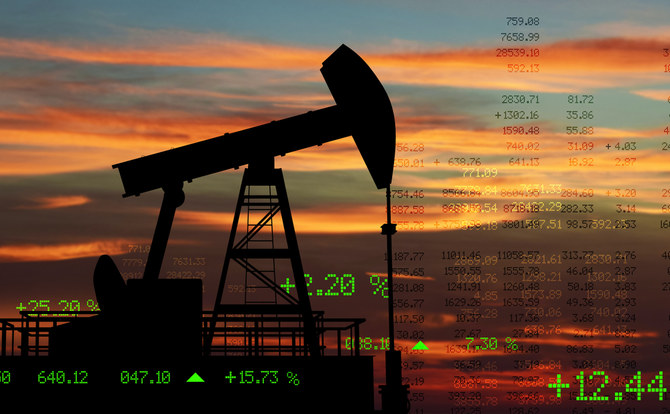
SINGAPORE: Oil prices rose on Tuesday after data showed China's economy grew faster than expected, while heightened tensions in the Middle East also kept markets on edge after Israel said it would respond to Iran’s weekend missile and drone attack, according to Reuters.
Brent futures for June delivery rose 20 cents, or 0.2 percent, to $90.30 a barrel by 10:57 a.m. Saudi time. US crude futures for May delivery rose 21 cents, or 0.3 percent, to $85.62 a barrel.
Earlier in the day oil prices had risen nearly 1 percent following the release of official data from China showing gross domestic product in the world’s biggest oil importer grew 5.3 percent in the first quarter, year-on-year, comfortably beating analysts’ expectations.
However, both benchmarks pared some gains as a raft of other Chinese indicators including real estate investment, retail sales and industrial output showed demand remained weak in the face of a protracted property crisis.
Oil prices soared last week to the highest levels since October, but fell on Monday after Iran’s weekend attack on Israel proved to be less damaging than anticipated, easing concerns of a quickly intensifying conflict that could displace crude barrels.
“Israel’s response will determine whether the escalation ends or continues. The conflict could still be contained to Israel, Iran and its proxies, with possible involvement of the US,” analysts at ANZ Research said in a note on Tuesday.
Israel’s Prime Minister Benjamin Netanyahu on Monday summoned his war cabinet for the second time in less than 24 hours to weigh how to react to Iran’s first-ever direct attack on Israel.
Iran produces more than 3 million barrels per day of crude oil as a major producer within the Organization of the Petroleum Exporting Countries.
World Bank raises Saudi Arabia’s 2025 GDP growth forecast to 5.9%
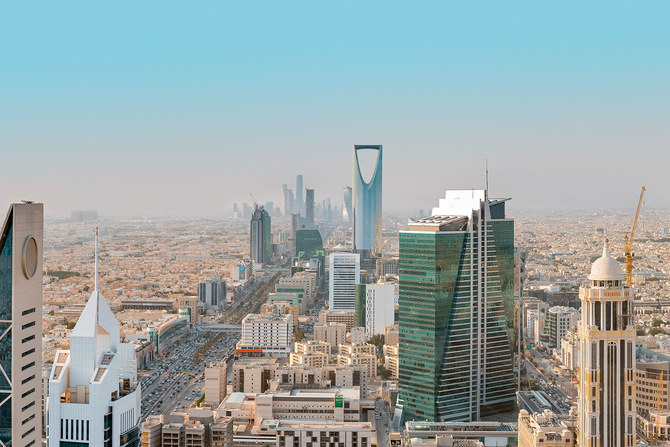
RIYADH: The World Bank has raised its expectations for Saudi Arabia’s economic growth to 5.9 percent in 2025 from 4.2 percent predicted earlier in January.
In its latest report the bank, however, revised its 2024 forecast for the Kingdom’s gross domestic product growth downward to 2.5 percent from an earlier forecast of 4.1 percent.
Concurrently, the overall GDP growth forecast for Gulf Cooperation Council countries in 2024 has been reduced to 2.8 percent, down from 3.6 percent, while the 2025 forecast has been revised to 4.7 percent from 3.8 percent.
The report also adjusted the UAE’s GDP growth forecast to 3.9 percent for 2024, up from the previously projected 3.7 percent, with a further rise to 4.1 percent in 2025, from 3.8 percent.
Kuwait’s economy is expected to expand by 2.8 percent in 2024 and increase further to 3.1 percent in 2025.
Similarly, Bahrain’s economy is likely to grow by 3.5 percent in 2024 and 3.3 percent in 2025, marking an increase from January’s projections.
Meanwhile, Qatar’s economy saw a downward revision for its 2024 forecast from 2.5 percent to 2.1 percent but an upward revision for 2025 from 3.1 percent to 3.2 percent.
Oman’s economy projections for 2024 and 2025 saw a marginal increase of 0.1 percent since the January forecast.
This adjustment reflects the broader economic trends where the surge in oil prices following Russia’s invasion of Ukraine in 2022 bolstered oil-exporting economies in the Middle East and North Africa.
In contrast, economic growth in non-oil-exporting nations — including MENA oil importers like Djibouti, Jordan, Morocco, Tunisia, and the West Bank and Gaza — has slowed.
By 2024, the growth disparity between GCC oil exporters and developing oil importers is expected to narrow to just 0.9 percentage points, marking a significant shift from 2022 when GCC countries grew 5.6 percentage points faster, the report stated.
“Developing oil exporters will grow 2.8 percent in 2024, down from 3.1 percent in 2023 while growth in developing oil importers is forecasted to decrease to 2.5 percent in 2024, down from 3.1 percent in 2023,” the report stated.
Overall, the MENA region is expected to achieve a growth rate of 2.7 percent in 2024, which aligns with pre-COVID levels but still trails the global average.
While other emerging markets and developing economies are also projected to remain below pre-pandemic growth rates, they are expected to surpass the MENA region by 1.2 percentage points in 2024.
GCC oil companies’ capex to grow by 5% to reach $115bn in 2024
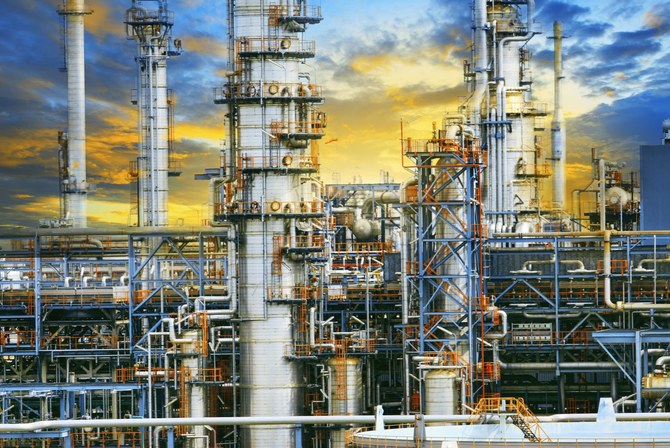
RIYADH: The capital expenditures of national oil companies in the Gulf Cooperation Council are likely to grow by 5 percent in 2024 as compared to the previous year and are expected to reach $115 billion, according to a report.
The analysis by S&P’s Global Ratings, however, does not take into account the potential surge in spending from recent expansion plans such as the North Field West Project in Qatar, which it said could significantly boost expenditures.
The report highlighted that while the growth in capital expenditure is modest, Saudi Arabia’s planned output cuts in line with the current policy of the Organization of the Petroleum Exporting Countries and its allies, known as OPEC+, is likely to decrease demand for drilling platforms, operating ratios, average daily production rates, and profitability among regional drilling companies, especially in the Kingdom.
“We stress-tested the effect of a hypothetical 15-20 percent loss of total rig demand in the region on GCC drillers, and we estimate that the debt to EBITDA (Earnings Before Interest, Taxes, Depreciation, and Amortization) of rated and publicly listed drillers based in GCC countries could increase by about 1x on average,” S&P Global Ratings Credit analyst Rawan Oueidat said.
“At this point, we think that drillers’ rating headroom could shrink, but we don’t expect any short-term rating pressure,” Oueidat added.
The agency also raised concerns about the future of capital expenditure in other oil and gas-producing countries of the GCC, following Saudi Aramco’s decision to suspend its plan to increase the Kingdom’s maximum production capacity.
Despite these concerns, the total oil capital expenditure in the region is expected to remain relatively high due to the ongoing expansion plans in Qatar and the UAE.
However, the pace and magnitude of spending are expected to impact oilfield service companies and the entire value chain, particularly drilling companies whose business models heavily rely on corporate capital expenditures.
The UAE’s Abu Dhabi National Oil Co. is set to increase its oil production capacity to 5 million barrels per day by 2027, up from 4 million bpd as of February 2024, according to the US Energy Information Administration.
Meanwhile, Qatar is aiming to boost its liquefied natural gas production capacity to 142 million tonnes annually by 2030 from the current output of 77 million tonnes.
The report predicted oil prices to average $85 per barrel for the remainder of 2024 and $80 per barrel the following year.
It also suggested that geopolitical tensions and planned production cuts by OPEC+ will support prices and enhance the cash flows of oil companies across the Gulf region.


